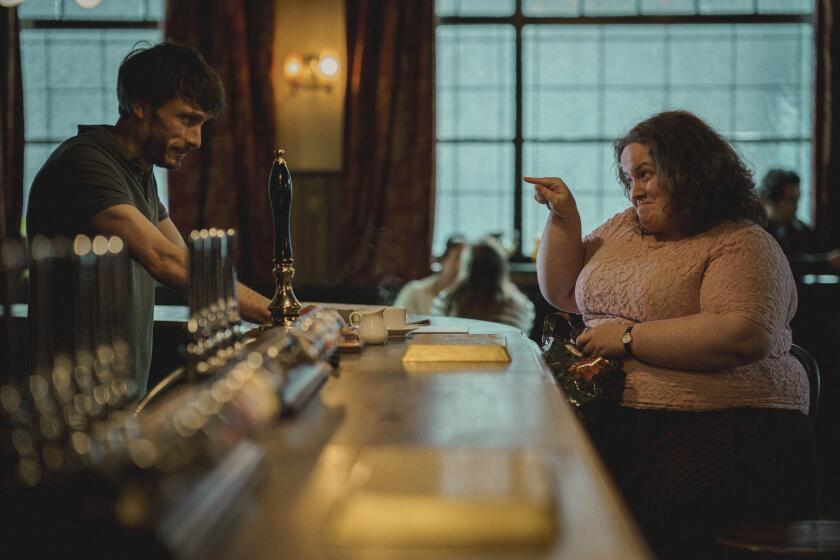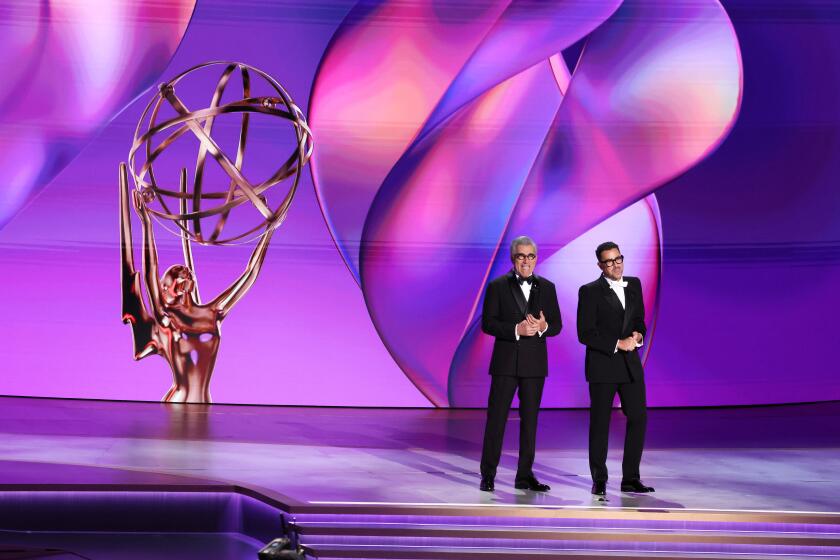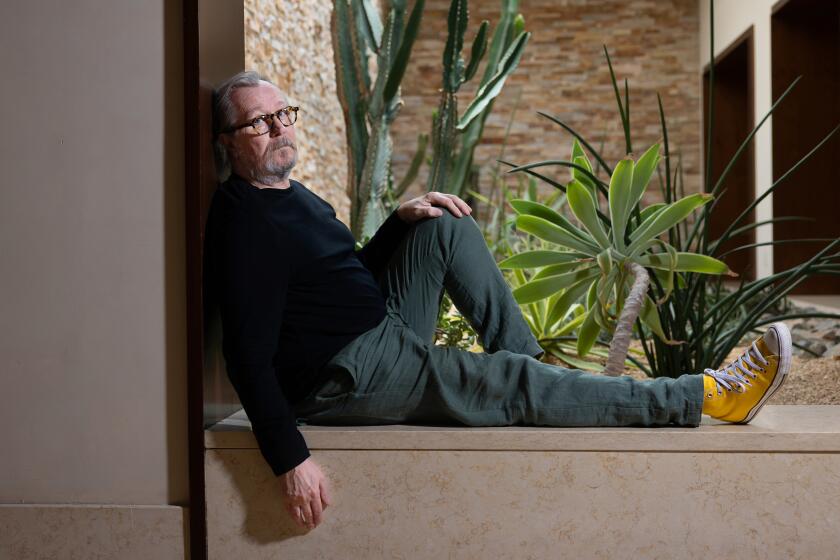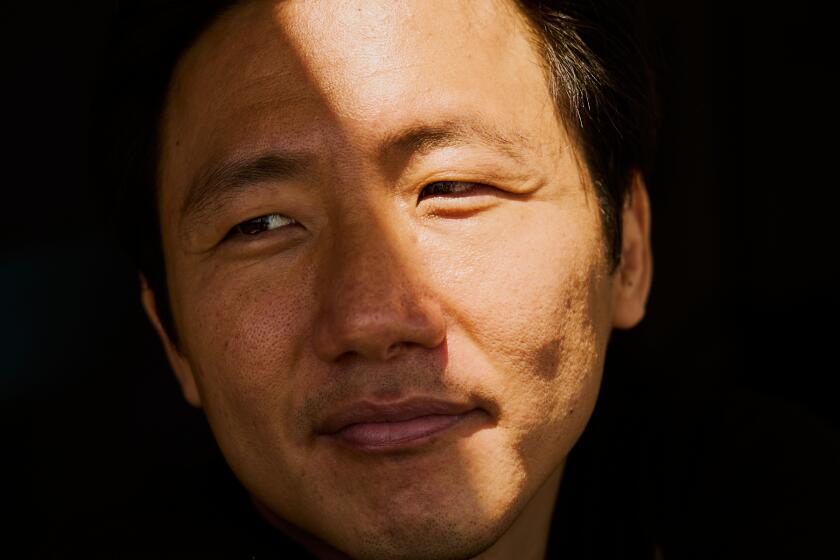‘Green Book,’ set in the 1960s, remains ‘a really important story for today,’ says Peter Farrelly
Peter Farrelly, a guy who’s had a hugely successful career making movies famed for their physical broadness and raunchy hilarity, isn’t the first filmmaker you’d expect to be behind one of this year’s top dramatic awards contenders — and a true-life, civil rights-era story at that.
But with the widely acclaimed, crowd-pleasing “Green Book,” Farrelly, whose 1998 comedy smash “There’s Something About Mary” contained the notoriously outré “hair gel” scene, says he had no qualms about jumping into more serious territory.
“It didn’t seem that different to me, honestly,” the frank and genial Farrelly said in a recent phone chat as he drove up Pacific Coast Highway. “I wasn’t afraid of [the drama] … I never doubted it. People have asked me if it was harder to shoot — and it wasn’t. I wish it was harder! A lot harder! And then I could say, ‘I understand why this one’s so much better than the others!’ ”
Farrelly’s journey with “Green Book,” named after a guide published from the 1930s to ’60s that directed African American travelers to welcoming (read: safe) businesses, began during a conversation with Brian Hayes Currie, an actor-writer friend who’d had small roles in such Farrelly films as “Me, Myself & Irene” and “Stuck On You.”
Currie mentioned he was working on a script with actor-filmmaker Nick Vallelonga about the friendship forged on an early-1960s road trip between Vallelonga’s Italian American father, a nightclub bouncer nicknamed Tony Lip (played in the film by Viggo Mortensen) and Don Shirley (Mahershala Ali), an African American classical pianist who hired Tony to drive him on a concert tour that took them to the Deep South.
Farrelly, who deemed the idea “a total home run,” eventually asked if he could write the screenplay with Currie and Vallelonga — and a partnership was born. Farrelly ended up rewriting Currie and Vallelonga’s “great” first draft, and then the three reconvened to “pound out” the final script. (Audiotapes of the senior Vallelonga as well as dozens of letters he wrote home while on the tour with Shirley informed much of the script’s narrative.)
“It was definitely a true collaboration,” said Farrelly, a Golden Globe-nominee, along with his co-writers, for the “Green Book” screenplay (he also earned a directing nod). “We were all on the same page.”
To wit, the writers agreed to compress the timeline of the actual road trip, which took place over the course of a year — from 1962 to 1963 and the death of John F. Kennedy. “We had it [the assassination] in the first draft, at the end,” Farrelly recalled. “But suddenly it changed everything. It wasn’t about these two guys anymore. By putting in such a huge part of American history, it kind of altered the chemistry.”
Although the movie, which was shot in seven weeks almost entirely in Louisiana, has many affecting dramatic elements, it’s also often amusing. That’s something for which Farrelly, despite his renowned comedy chops, takes no special credit.
“I never thought of it as funny until we shot it,” said Farrelly. “Honestly, a lot of the humor really does come from great nuanced performances by these guys [Mortensen and Ali]. It’s a little odd twitch here or a dumb look there that had us cracking up. It was a very good script, but they definitely made it better.”
The chance to depict its deeper themes of racism, knee-jerk intolerance and the destructive effects of Jim Crow-era bigotry also made Farrelly eager to tell this vital tale.
I felt the moment I heard it that this was a really important story for today.
— Peter Farrelly
“I felt the moment I heard it that this was a really important story for today,” Farrelly said. “I wish it was one of these movies where you could look back and say, ‘Can you believe it was like that?’ But it hasn’t changed enough, that’s for damn sure, and we’re definitely on a down tick.”
Still, the picture has been called out by some as being another in a long line of “white savior” stories, a concept Farrelly says he was aware of from the start and worked hard to avoid. ”I don’t believe anybody saves anybody in this movie,” the filmmaker said. “I think these two guys save each other. Sure, Tony got Don out of some pickles, but Don saves Tony’s soul.
“I know some people have problems with the fact that it’s a hopeful view of race relations,” Farrelly added. “But I believe that there is hope. And I believe if we talk and continue to talk we can solve these problems. Tony and Don, they’re so different, but they find a common ground because they talk.”
FULL COVERAGE: Get the latest on awards season from The Envelope »
More to Read
From the Oscars to the Emmys.
Get the Envelope newsletter for exclusive awards season coverage, behind-the-scenes stories from the Envelope podcast and columnist Glenn Whipp’s must-read analysis.
You may occasionally receive promotional content from the Los Angeles Times.








